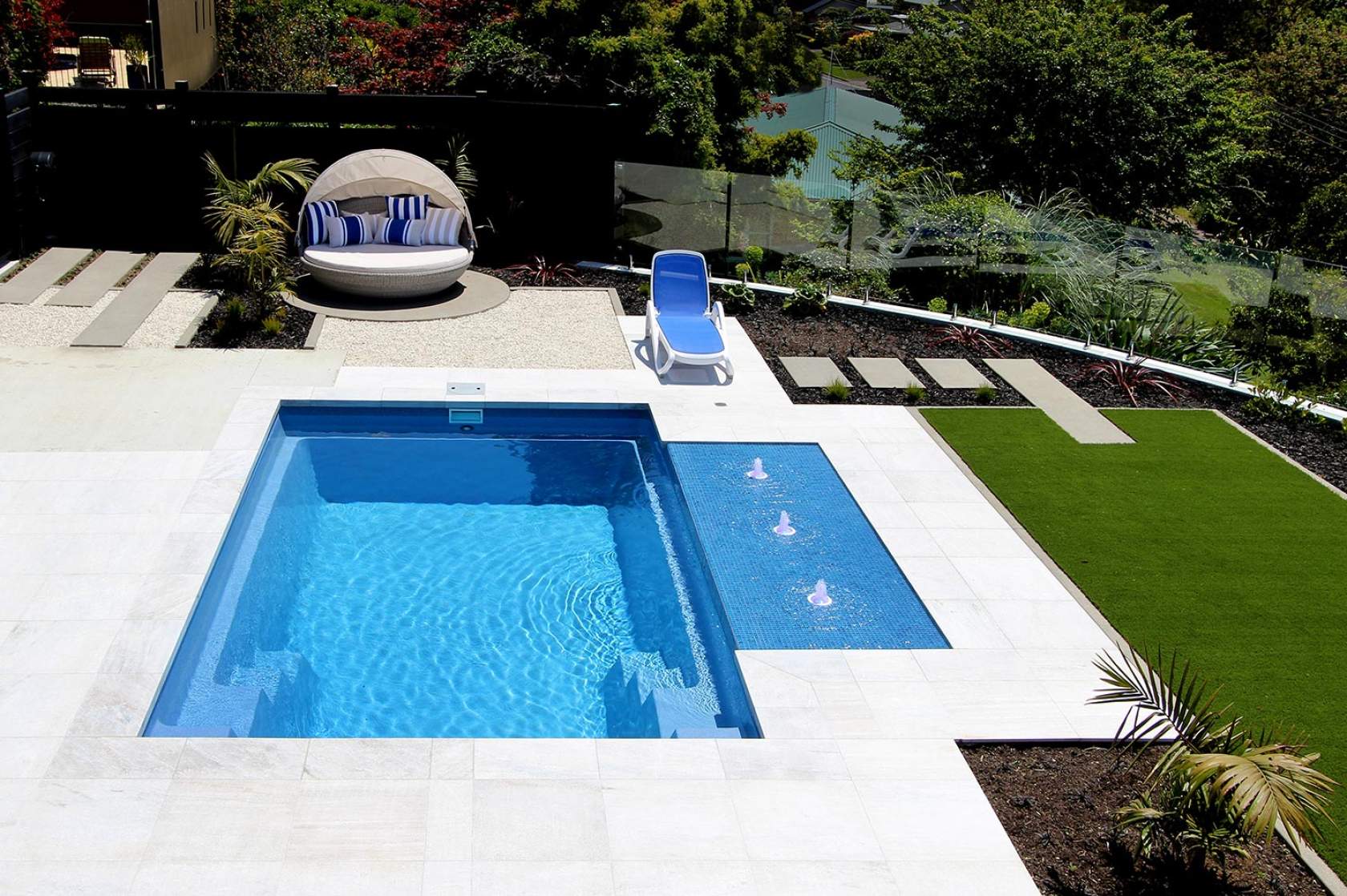

As good as new
Most manufacturers suggest a well-maintained fibreglass pool should last three decades, but years of sun and chemical exposure or a lack of appropriate care can lead to premature deterioration. If your fibreglass pool has seen better days, it might be time to consider a restoration.
One of the first decisions a potential pool owner faces is the choice between fibreglass and concrete construction. They are both great options, for completely different reasons. Budget, available space and desired design elements will all determine which is more suitable, but fibreglass is a consistently popular choice for Australian pool owners.
As a rule, fibreglass pools are cheaper than concrete. They are significantly quicker to install and running costs tend to be lower. They are strong, durable and withstand earth movements because they are designed to flex.
On the negative side, there is little scope for design customisation using fibreglass, compared with concrete. Fibreglass pools are prefabricated, so you are limited to the range on offer. While manufacturers do produce an increasingly wide range of styles, they can’t be tailored to suit your tastes or location.
When well maintained, a fibreglass pool should give you at least 30 years of enjoyment, but older pools are not without their issues, ranging from cosmetic to structural and beyond.
Why renovate?
If you inherited a fibreglass pool that already had a few years on the clock or your own installation is more than 15 years old, you may notice a few visible signs that suggest all is not well. There are plenty of specialist fibreglass pool renovators out there, so consider getting in touch if you spot any of the following telltale signs.
Cracks
Obvious cracks or splits in the pool shell can occur as the fibreglass layer ages and becomes more brittle. Deep cracks or splits may lead to further structural problems and leaking, so you’ll want to nip that in the bud.
Smaller hairline cracks are generally confined to the pool shell’s gel layer and may not indicate a serious problem. They’re often the result of pressure on the pool shell — caused by ground movement, for example — that is in excess of the pool’s capability to flex.
Either way, it’s better to understand the problem and whether rectification is required to avoid further issues, so check in with a fibreglass restorer for advice.
Blistering
Blisters on the pool interior indicate an osmosis issue — it’s kind of like the fibreglass version of concrete cancer and it isn’t good. In this instance, the gel coat layer has broken and allowed water to penetrate between the fibreglass layers. The blisters will eventually pop, leaving unsightly marks and creating an uneven surface on which algae and bacteria will thrive. Osmosis blistering has ongoing serious repercussions, so you should act as soon as possible to minimise any additional issues.
Discolouration
Age and sun exposure can eventually lead to some degree of fading or discolouration to the topcoat colour of the pool’s interior. Sometimes this results in a white chalky or flaky surface, most often when a lower quality gel coat layer product has been used. It’s another problem that can create and exacerbate a new range of issues so, if in doubt, get it checked out.
Older pools are also susceptible to chalking, which occurs when the top gel coat layer starts to oxidise. This could be the result of overexposure to chlorine, or simply due to the age of the installation.
Algae growth
One of the key benefits of using fibreglass in pool construction is the material’s capability to repel algae growth, thanks to a smooth non-porous gel coat layer. If you are seeing significant amounts of algae on the pool interior, it’s a sure sign that the pool finish has been compromised and may need to be resurfaced. Start with your local pool shop or technician to see if your maintenance program is on track, but also be open to speaking with a fibreglass restoration expert to ascertain the root cause of the problem.
Leaks
This one really goes without saying, as there is no instance in which a leaking pool is a good sign. Designed to do pretty much nothing else but contain water, a pool that is losing water (beyond evaporation) is failing at its job. That said, leaks can be caused by a variety of problems, so it may not necessitate a complete refurbishment. If nothing immediately indicates the cause of the leak, speak with a company that offers leak detection services.
Pure good looks
Of course, there’s no rule that says you need a problem in order to refurbish your pool. Many owners opt for a facelift to bring an older pool up to date, to match new home renovations or simply to increase property values.
What to expect
The nature of the problem and necessary rectification or desired improvements will obviously determine the length and cost of the project. At a minimum, you can expect the pool to be empty for at least a couple of weeks and to be a few thousand dollars out of pocket.
Surfaces will need to be prepared, including grinding and filling of damaged areas. If there are any physical additions or remodelling required, that will happen next, followed by application of multiple surface coatings including base coat, colouring and topcoat gel layers.
Advances in technology mean that new techniques and smarter materials are being used, delivering a better outcome than the original installation in most cases. UV stabilisation, for example, is much further advanced than 30 years ago, with the technology incorporated into an increasing range of pool surfacing products.
Renovating or refurbishing a fibreglass pool is no small undertaking, but it’s a worthwhile exercise if your pool is looking a little tired or is in need of some structural help.
Finding the right supplier is half the battle, so take the time to do some research. Start by selecting an accredited SPASA member so you know that you are working with the best. Our members will happily share before and after images to give you a feel for the type of work they carry out and can offer references from satisfied customers, so don’t be afraid to ask.
